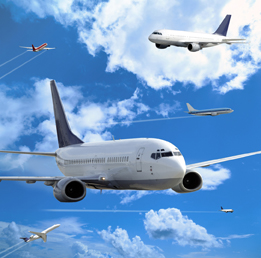In Try This 3 you will apply your understanding of multiplying and dividing functions to a problem that involves jet fuel.

F1online/Thinkstock
Try This 3
Suppose that the volume of fuel a jet has used from the time it reaches its cruising altitude to time t is given by the function f(t) = 15 500t − 250t2, where f(t) is measured in litres and t is in hours. The distance the plane has travelled t hours after reaching its cruising altitude is d(t) = 900t, where d(t) is measured in kilometres.
- Determine a function, r(t), that gives the average rate of fuel use per kilometre for the cruising portion of the trip after t hours.

- If the cruising portion of the trip is expected to take 15 h, determine the domain and range of f(t), d(t), and r(t).

-
- Determine the average rate of fuel use per kilometre after 3 h and after 12 h.
- Explain the difference seen in question a.
- At what time is the average rate of fuel use 15.4 L/km?
![]() Save your responses in your course folder.
Save your responses in your course folder.
Share 2
With a partner or group, discuss the following questions based on the information in Try This 3.
- Why is r(t) meaningless when t = 0 in terms of the scenario?
- Why would question 4 of Try This 3 have been difficult if you didn’t use the quotient function r(t)?
![]() If required, save a record of your discussion in your course folder.
If required, save a record of your discussion in your course folder.